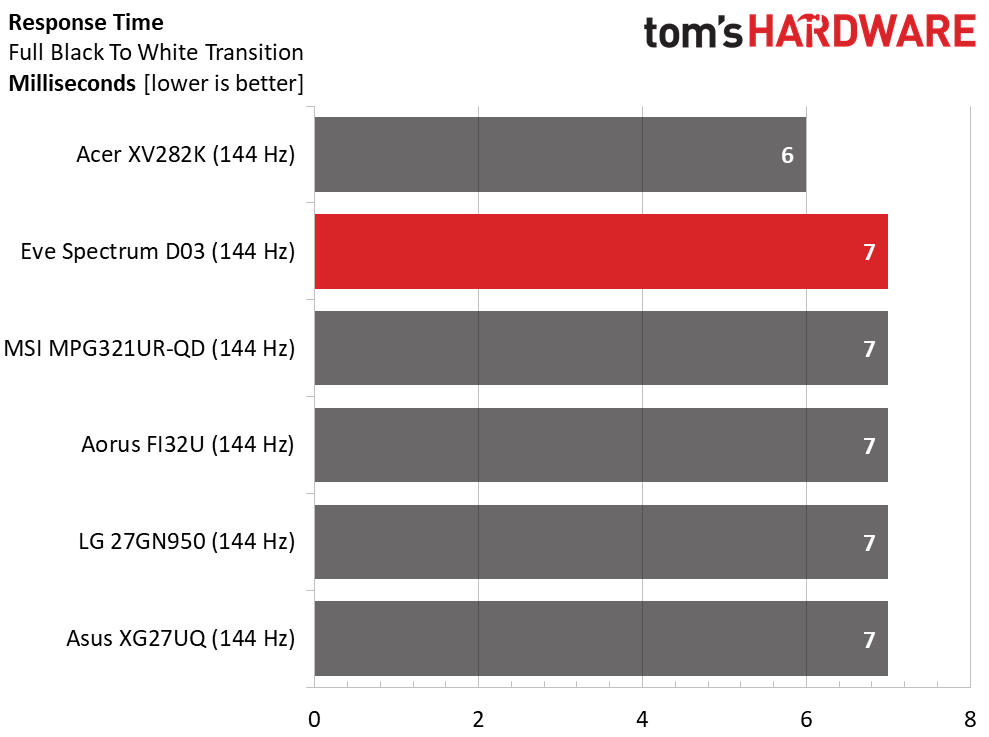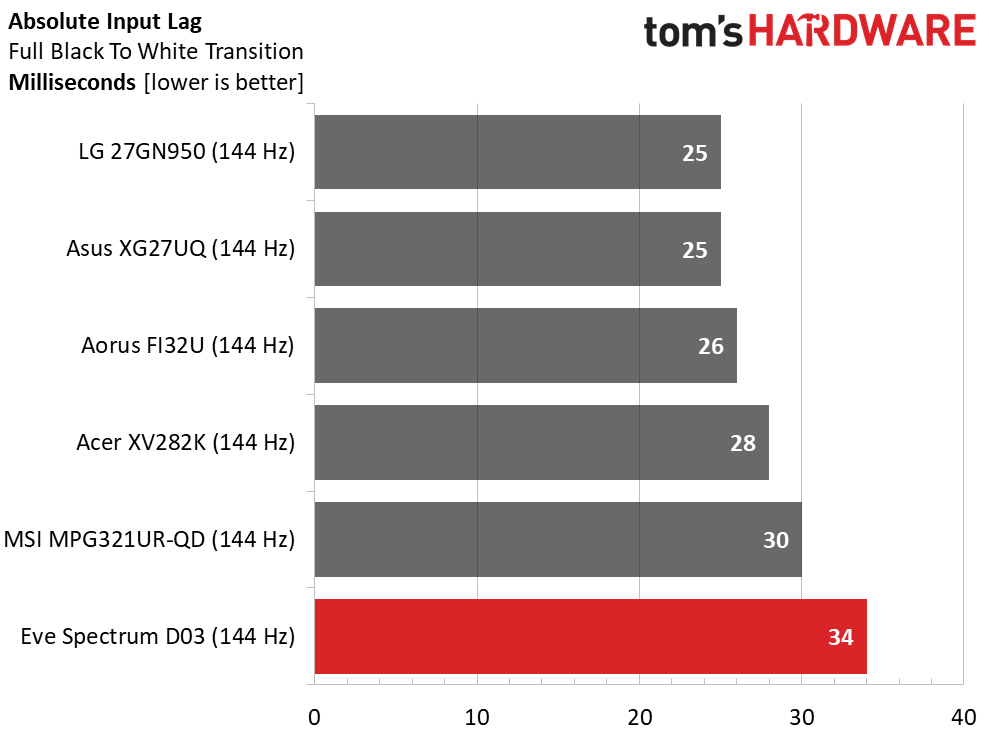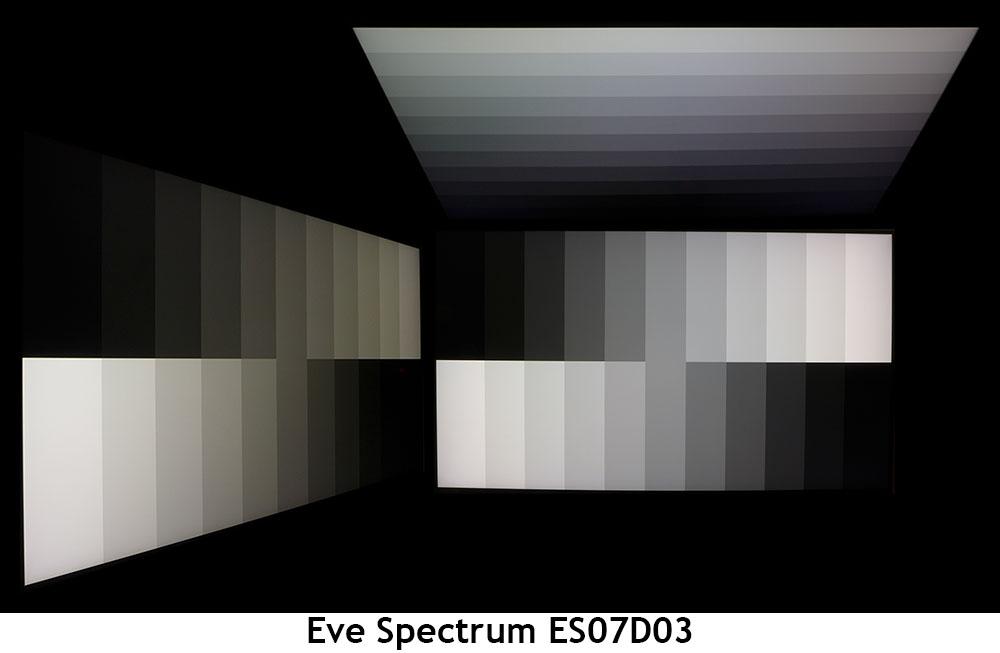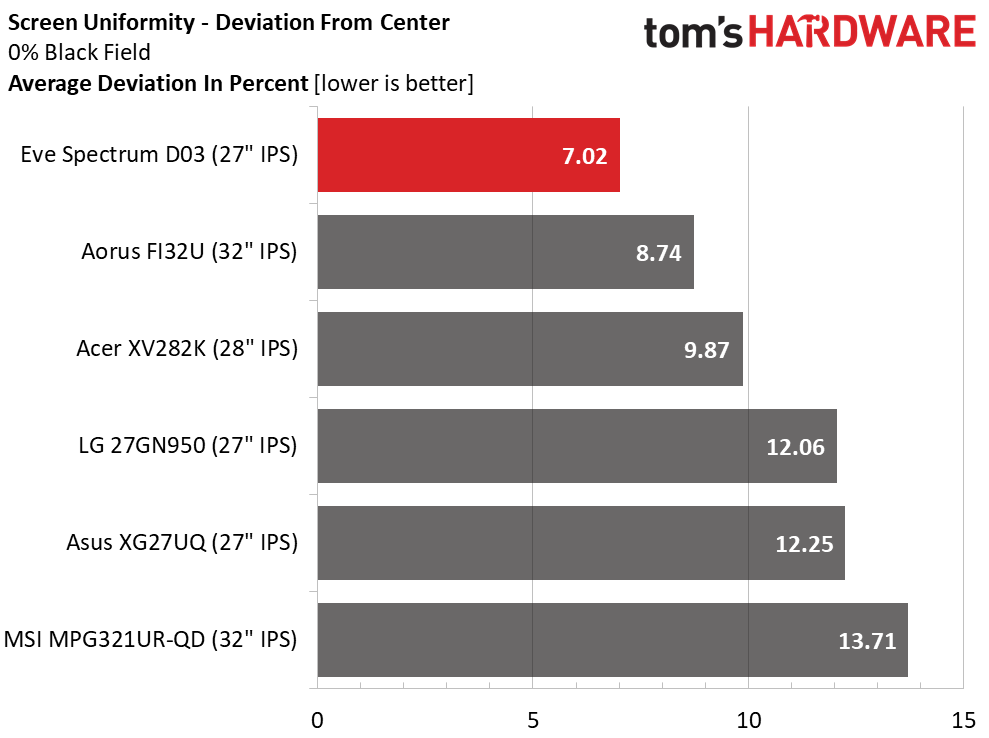Why you can trust Tom's Hardware
To compare the ES07D03’s performance, I’ve rounded up a group of Ultra HD screens running at 144 Hz that range from 27 to 32 inches in size: Aorus’ FI32U, Acer’s XV282K, LG’s 27GN950, Asus’ XG27UQ and MSI’s MPG321UR-QD.
Pixel Response and Input Lag
Click here to read up on our pixel response and input lag testing procedures.


The Acer manages to draw a full frame in 6ms while the others, Eve included, do it in a more typical 7ms. While some may be attracted to the Acer because of this, the ES07D03’s adjustable overdrive more than makes up for a 1m deficiency. You won’t find a smoother monitor than the Eve.
Its input lag is slightly higher than the others; however, most players won’t perceive a difference. I did not. But if you’re more skilled, the top three screens might serve you better.
Viewing Angles
The ES07D03 photographs well in the off-axis test. Like the latest generation of IPS panels, it loses only 10% of its light output at 45 degrees to the sides. A slight green tint is visible, but details remain well defined. Two people can easily share this monitor. The top view is tinted blue with a reduction in detail and 30% less brightness.
Screen Uniformity
To learn how we measure screen uniformity, click here.
The ES07D03 measured very well in the uniformity test. None of the zones deviated enough from the center of the screen to show a visible problem. All field patterns showed perfect uniformity from edge to edge for grayscale and color. Eve earns high marks for quality control.
Get Tom's Hardware's best news and in-depth reviews, straight to your inbox.
Current page: Response, Input Lag, Viewing Angles and Uniformity
Prev Page Features and Specifications Next Page Brightness and Contrast
Christian Eberle is a Contributing Editor for Tom's Hardware US. He's a veteran reviewer of A/V equipment, specializing in monitors. Christian began his obsession with tech when he built his first PC in 1991, a 286 running DOS 3.0 at a blazing 12MHz. In 2006, he undertook training from the Imaging Science Foundation in video calibration and testing and thus started a passion for precise imaging that persists to this day. He is also a professional musician with a degree from the New England Conservatory as a classical bassoonist which he used to good effect as a performer with the West Point Army Band from 1987 to 2013. He enjoys watching movies and listening to high-end audio in his custom-built home theater and can be seen riding trails near his home on a race-ready ICE VTX recumbent trike. Christian enjoys the endless summer in Florida where he lives with his wife and Chihuahua and plays with orchestras around the state.
-
Gillerer The review has no mention - never mind cautioning potential buyers - of the less-than-stellar reputation Eve has when it comes to delivering products....Reply
Taking preorders for the "first high-end high resolution monitor with high refresh rate", then taking months to fulfil the orders, by which time other manufacturers have released and actually started selling similar models; Buyers would have been better off waiting and getting the name brand option.
EDIT: And no, I'm not talking about kickstarter backers, but actual retail orders after the product was supposedly released. -
10tacle I am so tired of 27" 4K monitors. Can we PLEASE get 32" 4K straight up 16:9 for those of us with older eyes who like gaming but think that 1440p at that size is just not enough pixel density for the size? The large older flight simulator community will thank whoever creates one with business.Reply -
Trevor_lb You should be ashamed. How can encourage your readers to throw away $1000 on a product you know perfectly well they will never receive. I hope you were paid a lot.Reply
If you're considering patronizing this fraudulent company, PLEASE read google reviews, TrustPilot, and the subreddit first. -
IAmMrBongo Only 2 cons?Reply
The biggest con isn't mentioned, it being that the monitor is a con and will never arrive.
Been waiting since May. The monitor isn't real. There is no monitor. Buy an existent one instead.

